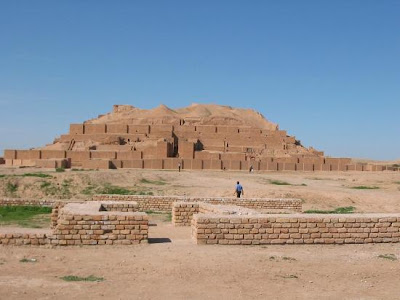"
"
The tourist attractions at Tchogha Zanbil, plus the historical artifacts in the area has resulted in its inclusion in the UNESCO World Heritage Sites list. It is one of the most impressive historical sites in Iran.
Location
The complex is situated in the Khuzestan province. It is 80 kilometers to the north Ahvaz, 30 kilometers west of Susa and 42 km south southwest of Dezfoul. You can get there by plane or by riding a taxi if nearby.
What to See
The Arg-e Bam citadel is the biggest attraction here. This ziggurat is a stepped pyramidal structure. The well preserved ziggurat is one of the few that are not in Mesopotamia to survive. The complex is comprised of five stories. The visitor to the site will see that it is made up of mud bricks. There are several tombs and burial chambers here.
Three walls were built to shield the temple, of which two can still be seen at the tourist attractions at Tchogha Zanbil. Another interesting feature here is the footprint of a child some 3,000 years old.
The place is lovely during the day, but it is most striking during the late afternoon. The sunsets are amazing. Organized tours will also take you to the city of Dur Untash.
History
The complex was constructed in the year 1250 BC. It was built on the orders of king Untash-Napirisha for the god Inshushinak. While a religious temple, researches are still not sure if priests actually resided there. The three walls were constructed to determine specific areas. The ziggurat was built atop a temple.
The middle sector of the complex includes shrines for other deities. In the outer section a funerary palace with royal resting places were built. Palaces were also constructed. Building of the complex ended when the king died.
Location
The complex is situated in the Khuzestan province. It is 80 kilometers to the north Ahvaz, 30 kilometers west of Susa and 42 km south southwest of Dezfoul. You can get there by plane or by riding a taxi if nearby.
What to See
The Arg-e Bam citadel is the biggest attraction here. This ziggurat is a stepped pyramidal structure. The well preserved ziggurat is one of the few that are not in Mesopotamia to survive. The complex is comprised of five stories. The visitor to the site will see that it is made up of mud bricks. There are several tombs and burial chambers here.
Three walls were built to shield the temple, of which two can still be seen at the tourist attractions at Tchogha Zanbil. Another interesting feature here is the footprint of a child some 3,000 years old.
The place is lovely during the day, but it is most striking during the late afternoon. The sunsets are amazing. Organized tours will also take you to the city of Dur Untash.
History
The complex was constructed in the year 1250 BC. It was built on the orders of king Untash-Napirisha for the god Inshushinak. While a religious temple, researches are still not sure if priests actually resided there. The three walls were constructed to determine specific areas. The ziggurat was built atop a temple.
The middle sector of the complex includes shrines for other deities. In the outer section a funerary palace with royal resting places were built. Palaces were also constructed. Building of the complex ended when the king died.



No comments:
Post a Comment